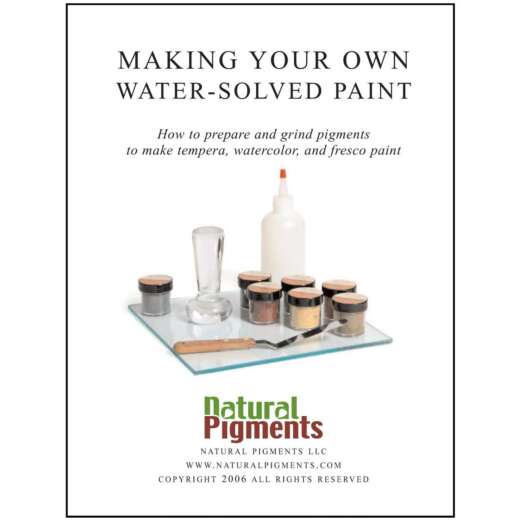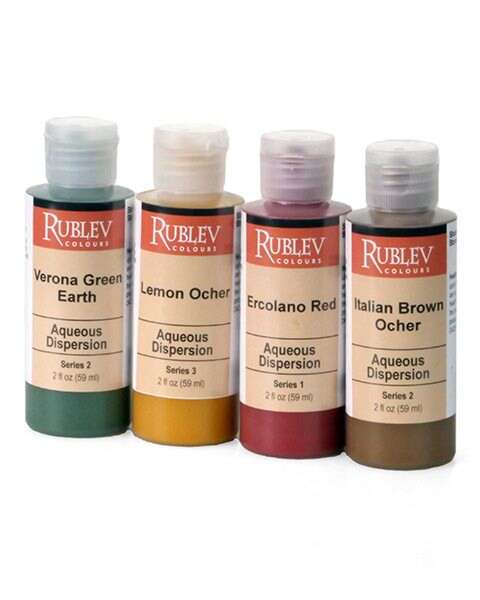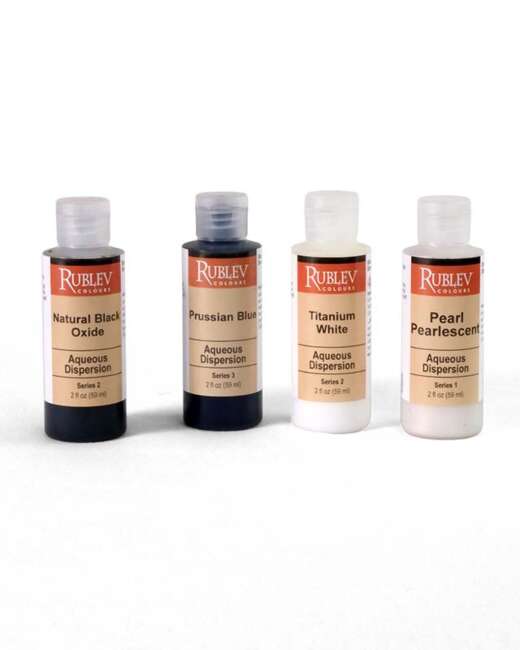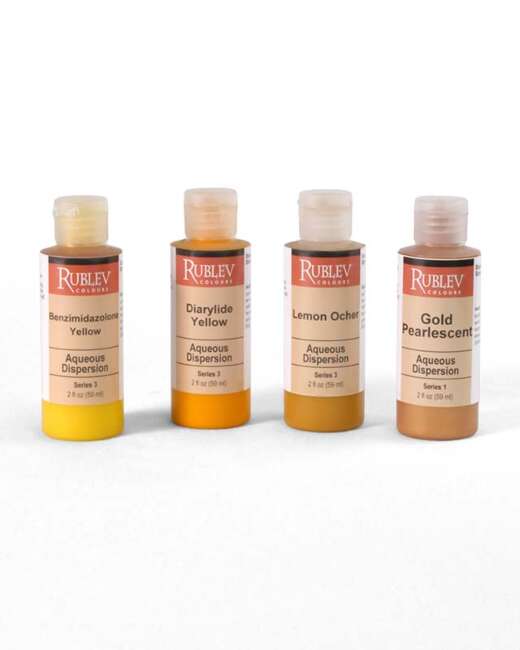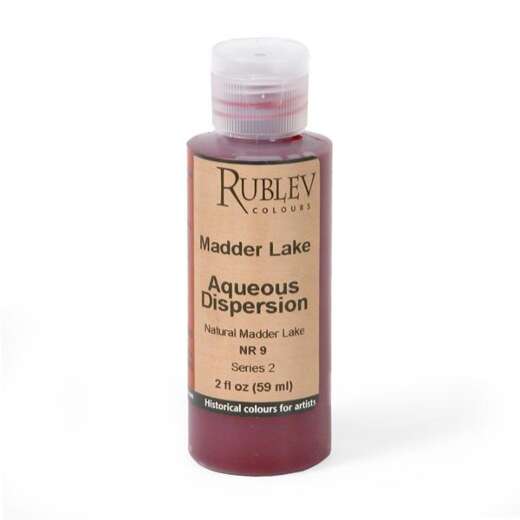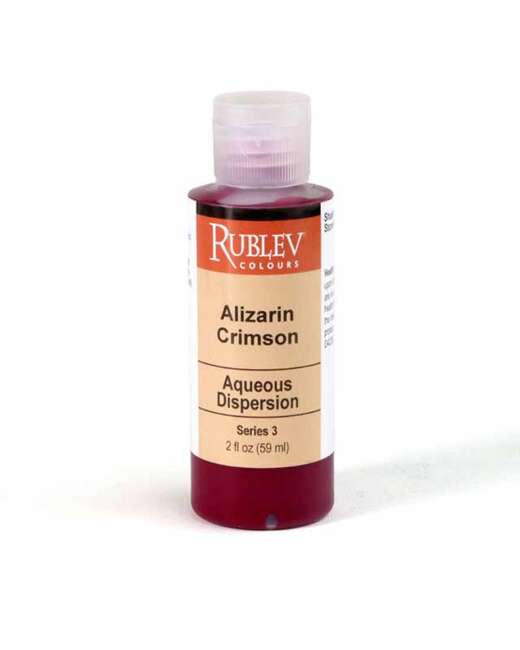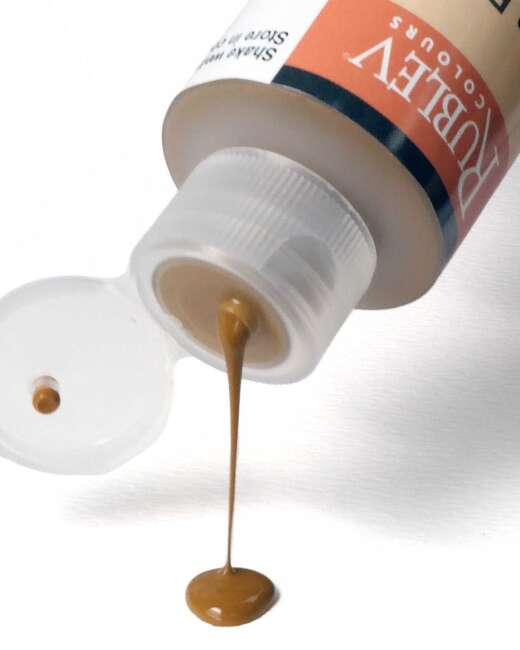Using Pigment Dispersions in Tempera Painting

I use Rublev Colours and Aqueous Pigment Dispersions made by Natural Pigments to compliment the powdered pigments I use to make my tempera paintings. Unless my powdered pigments are super-fine, I’ll need to grind them to a fine paste with water. The dispersions eliminate this step, allowing me to spend more time at my easel and less with my muller.
Although I love the range of hues and undertones present in the many ochres and umbers offered, as well as the covering ability of these earth colors, I was initially disappointed after buying Verona Green Earth and Nicosia Green Earth. The colors were ground extremely fine, making them very translucent when mixed with my egg and water medium, then thinned further with water to obtain a proper flow and consistency. I soon learned to love the “fine grind” when I started using them with my powdered pigments.
I create my painted flesh tones using the Early Renaissance manner of bringing thin veils of warm colors over a green, grisaille-like under-painting. While modeling in the flesh areas with a mixture of Terre Verde pigment and white, I periodically glaze thin veils of the translucent Verona Green Earth over the modeled areas to unify brushstrokes and to help soften tonal transitions. The fineness of the grind helps me keep my paint films nice and thin—a must in tempera painting.
After many thin layers of glazing and modeling back up to my highlights, I do a final thin glaze with Nicosia Green Earth. The Nicosia Green Earth glaze gives my under-painting the beautifully deep and slightly acidic green one finds in the green and verdaccio underpainting in a Ghirlandaio panel painting. I now can’t get along without my Verona Green Earth and Nicosia Green Earth dispersions during the under-painting process.
When the green under-painting is complete, I mix various warm, pinkish colors from my powdered pigments to work back over the green and develop my warm flesh tones. I’ll also mix values of Luberon Red Ocher, Orange Ocher, and Potter’s Pink dispersions with Titanium White to supplement my warm flesh palette.
If I use the warm tones too heavily and the painting starts to look too pink, I’ll apply a thin overall glaze of Verona Green Earth and Lemon Ocher dispersions. Later in the process, I’ll apply a thin glaze of dispersions with lots of water, Verona Green Earth, Lemon Ocher, and a tiny bit of Ercolano Red to brighten everything up and unify my warms. I do this several times as needed.
About Fred Wessel
Until 2011, Fred Wessel taught at the Hartford Art School as Professor Emeritus of the University of Hartford. He has had many solo exhibitions of his work throughout the United States and participated in numerous invitational exhibitions. To see more of his work, visit his website or Facebook page.
Aqueous Pigment Dispersions
Rublev Colours Aqueous Dispersions are pigments dispersed in water ready to be mixed with water-based mediums. These dispersions are specially made with traditional painting mediums, such as egg tempera, casein tempera, fresco, watercolors, and distemper (glue tempera). They are also ideally suited for use with gesso to make toned grounds for drawing and painting. Pigment dispersions from Rublev Colours contain only naturally-derived ingredients, in addition to pigment and water, making them ideally suited for traditional mediums. Unlike other pigment dispersions typically made for acrylic medium, Rublev Colours Aqueous Dispersions do not contain coalescent solvents, artificial dispersing resins, wetting agents, or other additives that interfere with natural mediums. Aqueous Dispersions make preparing traditional mediums easy; you do not have to hassle with powders, grinding pigments in medium, and calculating binder ratios to make water-based paint. They make adding the right amount of paint binder, such as egg yolk, a no-brainer because the right amount of water is already contained in the dispersion; add egg yolk.






